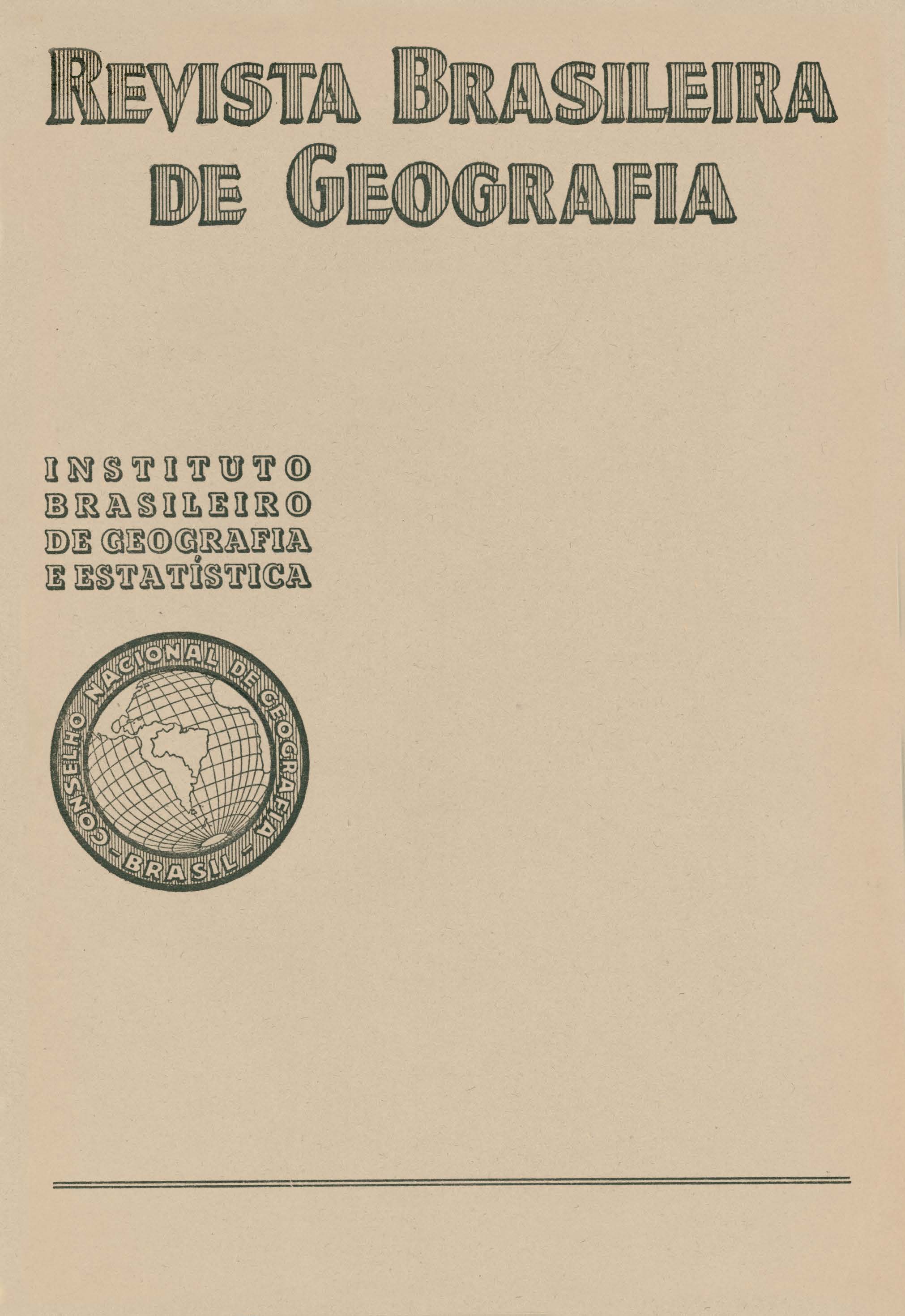Campina Grande e sua função como capital regional.
Palavras-chave:
Campina Grande – PB;, Paraíba;, Urbanização;, Geografia urbana.Resumo
The urban organism and its actuation on a wide surrounding are the main themes of this work ,on Campina Grande, a city that radiates its influence from the top of the Borborema plateau far over the hinterland, in contrast to the great majority of urban centers in he Norheast, wich only subsist in function of the rural area of their own municípios.
Repeating the general features of the plateau (in this stretch furrowed by the valleys of the Paraíba, the Mamanguape and the Curimatau and losing altitude toward the coast), the urban site is split up differences of level which have not, however, succeeded in affecting the growth of the built-up area which now measures about 780 hectares (3 square miles) without a break.
An analysis of the various functions the city shows that Campina Grande really is a back country capital and that it is largely through its trade (retail and wholesale) that it acts upon quite distant regions. Both branches are well represented-276 wholesale and 848 retail establishments. (data for 1962).
Subsequent enquiry into the industrial function revels a striking inequality between the tertiary and secondary sectors of the city. Though it is one of the most important centers of industrial concentration in the state of Paraíba, the more important plants, with few exceptions, limit their activities to processing raw materials for export, in particular cotton, agave fibers, ores and vegetable oils. The two groups, processing and manufacturing industries, are compared and seen to diverge considerably, both as regards the origin of the capital and value of the output, but particularly with reference to the range of business and extension o f the market.
On-the-spot research in business houses, banks, schools, hospitals and newspaper offices led to the drafting of numerous charts enabling three areas to be outlined in which the activity of Campina Grande is felt to a varying extent. The first, where its influence is predominant, comprises the zones of Brejo and Cariris Velhos. The second, where it is still quite marked and direct, embraces all the rest of the state of Paraíba, with the sole exception of the coastal zone, directly subordinate to the estate capital, João Pessoa; overlapping the neighbouring states, this are covers the south of Rio Grande do Norte (the region of Parelhas and Caicó as far north as Currais Novos) and, to some extent, the southeast of Ceará, i. e. the region of Crato and Juàzeiro do Norte. Finally, a third area where Campina Grande actuates almost exclusively through its most important function - that with the greatest power of penetration - retail trade.
This extensive actuation of Campina Grande is due to is geographical position, in contact with different regions, wich facilitates the concentration of the most varied products, and to the convenience, nowadays, of its ways of transportation branching out in various directions. Campina Grande today may be seen to be in a key position in the road and railway system of the state and of the Northeast as a whole, and logically stands out from the urban picture in that region. The tendency to concentrate the output of the neighbouring areas, both agricultural and pastoral, that early made Campina Grande into a community devoted above all to trade, has grown with passage of time, for each new or improved road thrown open to traffic has promoted expansion of its commercial sector. Thus the regional products of the adjacent zones of the Agreste, the Brejo and the Sertão were supplemented by those from other regions near or far that reached the city over the new highways of through the ports ont the seaboard.
For purposes of analysis the evolution of the city has been divided into three stages indicating the successive steps in urban development, related to the enlargement of its range of influence, and also its varying dependence on the supplier markets. The first stage covers a lengthy period stretching from the foundation of the settlement that was to be Campina Grande up to the laving of the raliway in 1907, the second proceeds from then on cp to the construction of the modern highways shortly after 1930; while the third is concerned with the predominance oft these ways of communication over the others. In the first stage, it was most closely dependent on Recife, either directly or indirectly through the city of Paraíba, now the state capital, João Pessoa. When the railway tracks reached Campina Grande, its dependence of Recife was intensified. In the third stage, with the advent of the new highways and the spreading use of the motor truck, Campina Grande was able to free itself from almost exclusive dependence on the northeastern markets, and obtain its supplies as well from the great national centers situated in the southeast of the country.
The unequal length of these phases provides a gauge of the quickening rate of development of Campina Grande in the last few years, transforming it into a true symbol of urban progress and a vibrant example of the very real capacity of achievement of the Northeastern.






